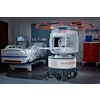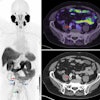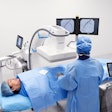
Demand is greatest for general, abdominal, and interventional radiologists, the authors of a new survey of the job market have found. Also, nearly a third of employers now prefer applicants with nonclinical skills, particularly in research, management, and AI, they discovered.
"The most sought-after subspecialties were all-round (22%), abdominal (19%), and interventional radiology (14%), and 30% of vacancies preferred applicants with additional nonclinical skills (research, teaching, management, information and communications technology, AI)," noted radiologist Dr. Ton Velleman, PhD, and colleagues from the University Medical Center Groningen, Netherlands, in an article posted by European Radiology on 11 August.
Convinced that a review of job vacancies over an extended period provides not only valuable information to residents but also feedback to improve training programs, the researchers studied a total of 157 vacancies (146 for radiologists and 11 for nuclear medicine physicians) posted in the Netherlands between December 2020 and February 2022.
| Requested subspecialties in nonacademic versus academic vacancies | |||||
| Subspecialty | Hospital | ||||
| Nonacademic (n = 119) | Academic (n = 34) | ||||
| Radiology posts (n = 146) | Abdomen | 21 (18%) | 9 (26%) | ||
| All-round | 34 (29%) | 1 (3%) | |||
| Breast | 11 (9%) | 0 | |||
| Cardiothoracic | 6 (5%) | 5 (15%) | |||
| Intervention | 17 (14%) | 5 (15%) | |||
| Musculoskeletal | 11 (9%) | 4 (12%) | |||
| Neuroradiology/head and neck | 6 (5%) | 5 (15%) | |||
| Other | 3 (3%) | 4 (12%) | |||
| Nuclear medicine (n = 11) | Nuclear medicine | 10 (8%) | 1 (3%) | ||
Overall, they found that significantly more nonacademic hospitals requested all-round radiologists than academic hospitals, while the distribution of other requested subspecialties was not massively different between nonacademic and academic vacancies.
Nonacademic hospitals also significantly more frequently requested additional research tasks in their vacancies (n = 35) compared with academic hospitals (n = 4). There were nonsignificant trends for nonacademic hospitals more frequently requesting teaching tasks in their vacancies (n =18) than academic hospitals (n = 1), and for nonacademic hospitals more frequently asking for management skills (n = 11) than academic hospitals (n = 0).
| Distribution of requested subspecialties between permanent and locum vacancies | |||
| Subspecialty | Locum vacancies (n = 106) | Permanent vacancies (n = 51) | |
| Radiology (n = 146) | Abdomen | 20 (19%) | 10 (20%) |
| All-round | 23 (22%) | 12 (23%) | |
| Breast | 9 (9%) | 2 (4%) | |
| Cardiothoracic | 9 (9%) | 2 (4%) | |
| Intervention | 11 (10%) | 11 (21%) | |
| Musculoskeletal | 15 (14%) | 2 (4%) | |
| Neuroradiology/head and neck | 8 (8%) | 4 (8%) | |
| Other | 5 (5%) | 3 (6%) | |
| Nuclear medicine (n = 11) | Nuclear medicine | 6 (4%) | 5 (10%) |
Among the other trends identified by the researchers were the following:
- Job applicants who had completed the Dutch integrated nuclear medicine and radiology residency seem to be welcomed by hospitals searching for a nuclear medicine specialist. "Although the number of vacancies for nuclear medicine physicians in this study was relatively low, the majority of them specifically asked for a nuclear radiologist. This is most likely due to the versatility of a nuclear radiologist compared to a specialist trained in nuclear medicine only, because the former can be deployed for both nuclear medicine and radiology tasks."
- There is an urgent need to train residents in important nonclinical skills, such as research and teaching, but also management and communications technology and AI. "Next to clinical excellence, research and teaching are important pillars in the mission statement of the nonacademic top hospitals in the Netherlands."
- Management tasks were only requested in nonacademic vacancies, suggesting that trainees wishing to join a nonacademic appointment should consider bolstering their management skills.
- Communication and empathy skills (so-called soft skills) were not explicitly asked for in any of the vacancies. This may be because Dutch residents are trained according to the Canadian Medical Education Directives for Specialists (CANMEDS criteria) and these skills might also be tested during the application procedure, the authors explained.
"I would expect the situation to change, since the outflow of residents and demand for new radiologists in the different subspecialties goes up and down constantly," Velleman told AuntMinnieEurope.com on 14 August, adding that there are no immediate plans to do a follow-up study but this might change in the future.
You can read the full article here. Velleman's fellow authors were Drs. Walter Noordzij, Rudi A.J.O. Dierckx, and Thomas C. Kwee.



















